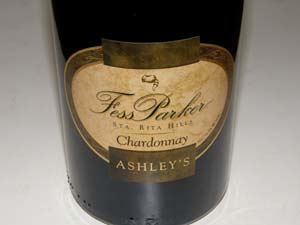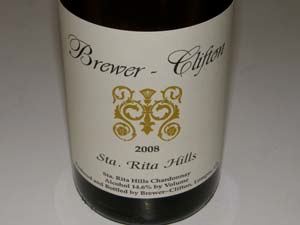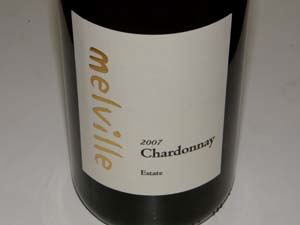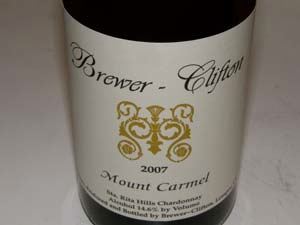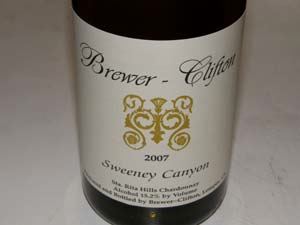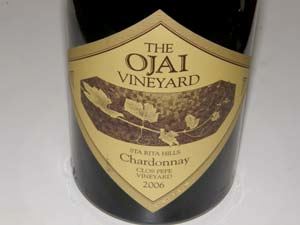Sta. Rita Hills: California’s Best AVA for Chardonnay?
Chardonnay is most likely the result of an amorous fling in the distant past between Gouvais Blanc and Pinot
Noir. I like the result of this Pinot Noir infidelity and when I am not drinking Pinot Noir, I can usually be found
with a glass of California Chardonnay in hand. I enjoy all styles, but I prefer three-quarters to full throttle oak
imbued, buttery, 100% MLF Chardonnay grapes when I am just sipping. I go for the combo of stainless steel
and oak fermented style when dining. A large portion of the aromas and flavors of California Chardonnay come from the winemaking, but differences in regional climate are an important factor.
In recent months I have had marvelous Chardonnays from the Sonoma Coast (Hirsch Vineyard, Mendocino
Ridge), Russian River Valley (Ritchie Vineyard, Heintz Vineyard), Mayacamas Mountains (Hanzell), Carneros
(Ramal Vineyard), Santa Maria Valley (Solomon Hills Vineyard), and Sta. Rita Hills (Sea Smoke Vineyard). We
are blessed in California with both older plantings of Wente clones as well as newer plantings of Dijon clones,
providing a diverse mix of flavor profiles.
The Sta. Rita Hills has become most known for its excellent Pinot Noirs which producers here have focused
on. The truth is, however, that the region may be even better suited for Chardonnay than Pinot Noir and my
recent tasting of a number of Sta. Rita Hills Chardonnays provides support for this statement. Jay MacInerney
voiced the same opinion in a recent article in the Wall Street Journal (May 22-23, 2010) titled, “Radical
Chardonnays: Santa Barbara winemakers are taking Cali chards in crisp new directions.” MacInerney notes,
“The hottest area for Chardonnay, the Santa Rita Hills, is an appellation that came into existence only in 2001.
Actually it’s not so much hot as it is cool, which gives these Chardonnays a crispness that’s missing from so
many California chards. The first time I tasted a Chardonnay from the Santa Rita Hills, I was baffled. On the
one hand, it was very ripe and fleshy, and on the other, it had a bracing acid-slap that I associated with coolclimate
whites and even a mineral note, which you seldom find in New World wines. It was little like meeting
Jessica Simpson, only to have her start speaking perfect French in Carla Bruni’s voice.” Chardonnay clearly
performs best in cool climates and is often planted side-by-side with Pinot Noir.
My recent tasting of Sta. Rita Hills Chardonnays confirmed MacInerney’s comments. The wines are more
steely and mineral-infused than is usual for California, presumably due to the acidity. They are crisper and
brighter than many California Chardonnays and more akin to French white burgundies but with riper and richer
fruit and more alcohol. The high acidity keeps the high alcohol in balance and the balance makes these good
food wines.
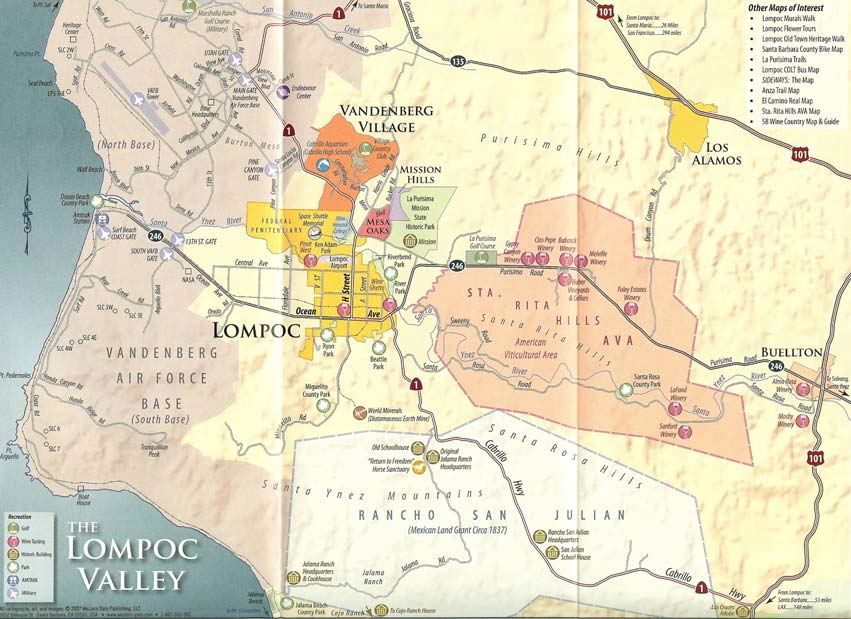
Perhaps Brewer-Clifton, which was featured in MacInerney’s article, is the most visible producer of Sta. Rita
Hills Chardonnay, but there are a number of others to recommend including Alma Rosa, Au Bon Climat,
Babcock, Clos Pepe, Fess Parker, Melville, and Sea Smoke. I recently visited Sea Smoke and drank the 2008
Chardonnay out of magnum, a beautifully balanced California interpretation of Chablis that will be sold to
customers for the first time. In the past, Sea Smoke only bottled Chardonnay with the “Gratis” label, and gave
it away to the winery’s best customers. Prices for Sta. Rita Hills Chardonnays are on the high side, with
premium bottlings ranging from $35 to $70, and many wines only available to mailing list or wine club
members.
I have learned a few tricks about enjoying Chardonnay. First, never serve Chardonnay too cold or you will
squelch the aromatics and flavors. A cellar temperature of 60 degrees is about ideal and let it warm in the
glass over time. (Check feature on page 33 for more on this). Second, use a Burgundy style glass of the type
you would use for Pinot Noir. Do not use the smaller Chardonnay designated glasses made by stem
producers. The larger bowl releases more of the wine’s aromas and allows for more swirling to aerate the wine.
Third, Chardonnays tend to oxidize more slowly than red wines, so re-corking and placing the wine back in
your cellar will prolong the life of the wine for several days.

2008 Fess Parker Ashley’s Sta. Rita Hills Chardonnay
14.3% alc., $22. Ashley’s Vineyard was planted in 1997 and
was named after Fess Parker’s daughter. The vineyard has
been sold to Foley and is now split into Lindsay’s Vineyard
(red varieties) and Courtney’s Vineyard (white varieties
including Mt. Eden clone of Chardonnay), both part of Rancho
Las Hermanas, but Fess Parker retains the “Ashley’s”
designation. The vineyards span 213 planted acres.
·
Straw color in the glass.
Nicely appointed nose featuring scents of green apple, pear, cinnamon spice,
and a hint of oak toast. Very tasty essence of white stone fruits in a seamless
style with a well-proportioned acid backbone. Very clean on the finish, drawing the drinker to take another sip.
California Chardonnay at its finest. Because of the name, many wine geeks do not take the winery seriously,
but I am here to tell you that this is a label worth exploring for all of its varietals.
2008 Brewer-Clifton Sta. Rita Hllls Chardonnay
14.6% alc., 1,296 cases,
$36, wax closure.
·
Straw color in the glass. Very shy and opens slowly revealing
aromas of lemons, wax, and cheese. Pleasant but nondescript and rather
austere with a citrusy, waxy and toasty core. The alcohol gives the wine body
and creaminess, the bright acidity contributes a brisk finish. Seems like a lot of
wine with little flavor (a Big Mac without the secret sauce). Decent.

2007 Melville Estate Sta. Rita Hills Chardonnay
14.9% alc., $20.
·
Straw yellow in the glass. Appealing aromas of buttered toast, honey
and lemon curd. Rich and bright on the palate with a tasty core of
green apple, peach and honeydew flavors and toasty oak in the
background. Hi-tone acidity brightens the finish. Well-endowed and
full-bodied, this is very California at heart. Very good.
2007 Brewer-Clifton Rancho Santa Rosa Sta. Rita Hills Chardonnay
14.6% alc., 284 cases, $45, wax
closure. Clones 4 and 76.
·
Straw color in the glass. The nose draws you in with aromas of apple pie, citrus
fruits, buttered toast and caramel. The flavors echo the aromas. Luscious and well-endowed, possessing
zippy acidity and a crisp finish. Very good.
2007 Brewer-Clifton Mount Carmel Sta. Rita Hills Chardonnay
14.6% alc.,
480 cases, $65, wax closure. Planted in 1991 by Ron and Nancy Piazza, this
monopole vineyard is overseen by vineyard manager, Francisco Ramirez. Of
the twenty acre parcel, six are planted to the Wente clone.
·
Clear, straw color in
the class. Restrained aromas of white peaches, roasted nuts and brioche.
Appetizing peach and lemon fruit with a hint of papaya and noticeable citrus peel
on the steely finish. Seamless with faint tannin and admirable persistence on
the finish. Very good.

2007 Brewer-Clifton Sweeney Canyon Sta. Rita Hills Chardonnay
15.2% alc., 120 cases, $70, wax closure. Twelfth bottling from this site.
Planted on its own roots to a Wente selection and dry farmed.
·
Light
straw color in the glass. Distinctive aromatic profile of dried herbs,
candle wax and cut flowers. Lovely flavors of peaches and nectarines
with a faint note of oak in the background. Slightly creamy and more
demure than the Mount Carmel and Rancho Santa Rosa bottlings with a
better fruit and acid balance. No sign of alcohol.
2006 The Ojai Vineyard Clos Pepe Vineyard Sta. Rita Hills Chardonnay
14.0% alc., $35. From renowned winemaker Adam Tolmach. Clone 76.
·
Straw
yellow color in the glass. The aromas are dominated by oak-derived notes of
toast and vanilla which tend to blow off over time exposing the mineral-imbued
citrus fruits. Delicious on the palate, soft and smooth, with pleasing flavors of
white peaches, lemons and pink grapefruit, leaving a lasting impression on the
persistent and high-spirited finish. A high-class wine singing in perfect harmony.
Very good.




